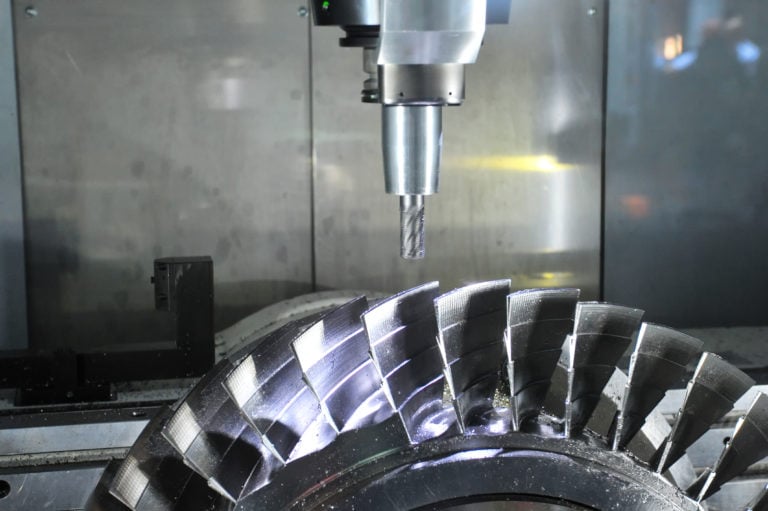Metal spinning is a metal forming process used to turn metal discs and tubes into axially symmetrical parts and products. It offers many distinct advantages, one of which is the ability to uniformly spin from a wide variety of materials.
One of the most commonly used materials in metal spinning operations is stainless steel, specifically the 300 and 400 series. Its strength and corrosion resistance make it an ideal material choice for a wide range of applications and industries. Additionally, both the 300 series and 400 series demonstrate unique characteristics that make them suitable for metal spinning projects.
Material Specifications
Stainless steels are iron-based alloys with a minimum chromium content of 10.5%. This high chromium content allows for the formation of a passive chromium oxide layer on the material, which leads to superior corrosion resistance among all stainless steels.
The exact breakdown of alloying elements in a particular type of stainless steel provides the material with specific structural characteristics. For example:
Stainless Steel 300 Series
300 series products are the most commonly used of the stainless steel family. They are generally made from chromium, nickel, and molybdenum. In addition to excellent corrosion resistance, key characteristics of these materials include:
- An austenitic crystalline inherent structure (non-magnetic)
- Extensive machinability
- Broad finishing options
- Good high-temperature stability
- Resistance to cracking, etching, and scratching
- Simple maintenance requirements
They are used in many industrial and commercial applications, including those in the aerospace, automotive, and construction industries.
Stainless Steel 400 Series
400 series products typically contain chromium and manganese. While they do demonstrate the level of corrosion resistance that is typical of stainless steels in general, they are less resistant to corrosion than 300 series products. As a result, they typically cost less. Other key characteristics of these materials include:
- A martensitic crystalline structure (magnetic)
- Non-hardenable by heat treating
- Strength greater than carbon steel
- Resistance to scaling at elevated temperatures
- Good surface finishing options
- Suitability for applications where thinner materials/reduced weight are needed
Material Advantages
In general, stainless steels are known for the following benefits:
- Resistance to heat and corrosion
- Ease of fabrication
- Excellent strength-to-weight ratio
- Cost-effectiveness
However, different stainless steels also have unique advantages that make them suitable for particular applications. For example:
Stainless steel 300 Series materials can offer:
- Oxidation resistance in temperatures up to 2100° F
- Carburization and nitriding resistance
- Thermal shock resistance
- Strength retention in high temperatures
- Chloride ion stress corrosion cracking resistance
- High creep strength
Stainless steel 400 Series materials can offer:
- Heat treatability to a broad range of hardness and strength level
- Easy machinability
- Good ductility
Stainless Steel Metal Spinning at Helander
The benefits of metal spinning combined with the characteristics of stainless steel result in parts and products that are ideally formed and aesthetically pleasing. Typical examples include industrial parts and equipment, cookware, instruments, decorative parts, aerospace components and more.
Need metal spun stainless steel components or assemblies? The experts at Helander have got you covered. We can spin stainless steel components as large as 60 inches between centers and 100 inches in diameter with thicknesses up to 1.00 inch. To learn more about our metal spinning capabilities, contact us today. To partner with us on your next project, request a quote.

